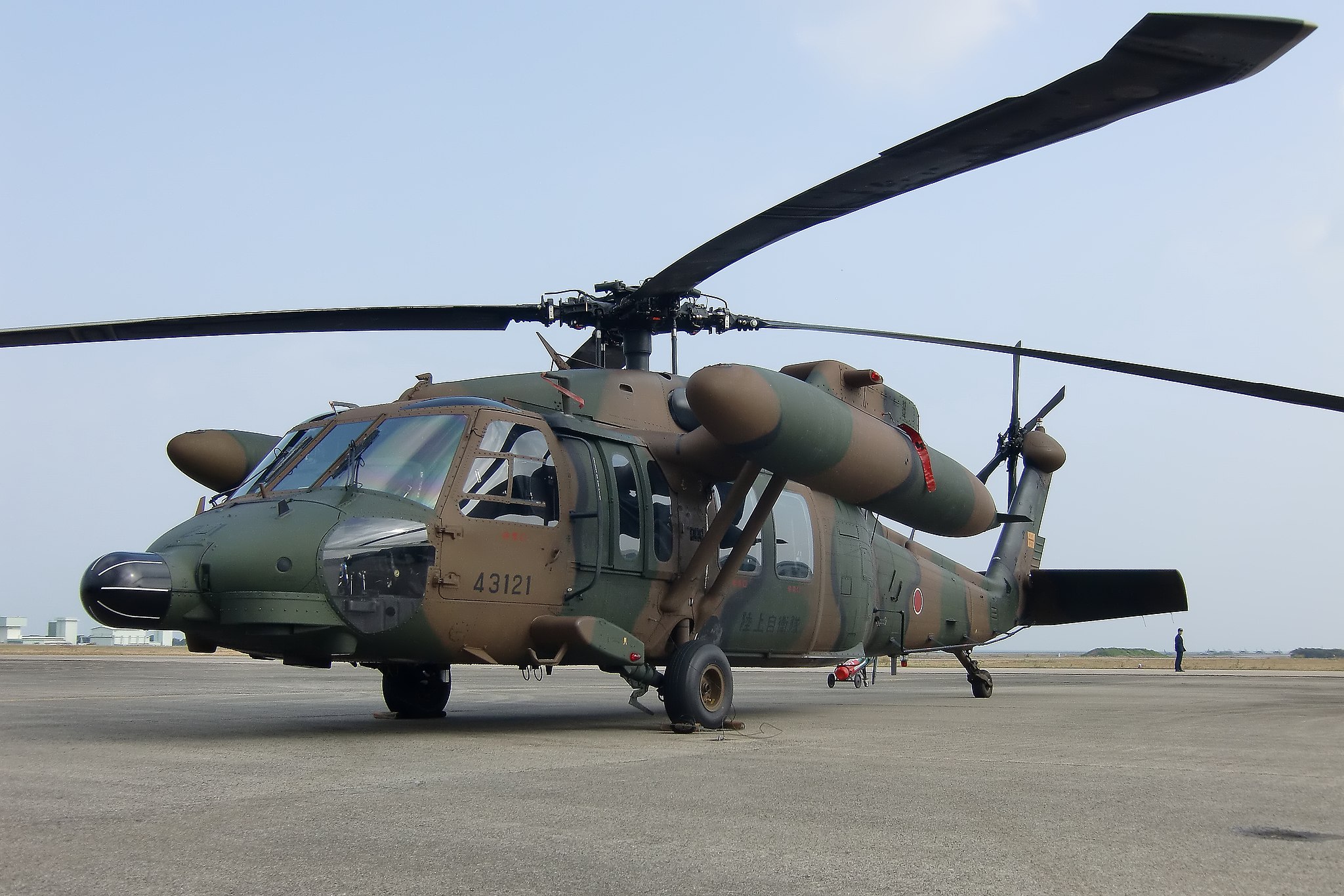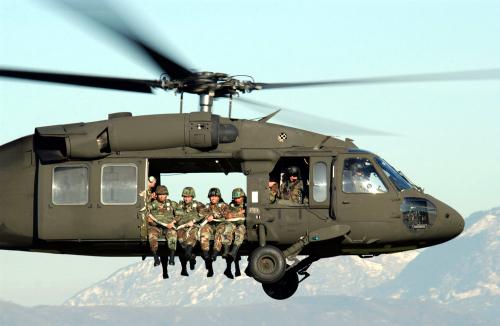Exactly How the UH-60 Blackhawk Boosts Movement and Safety And Security in High-Stakes Missions
Exactly How the UH-60 Blackhawk Boosts Movement and Safety And Security in High-Stakes Missions
Blog Article
Comprehensive Introduction of the UH-60 Blackhawk Helicopter
The UH-60 Blackhawk helicopter, a characteristic of modern-day military aviation, has actually played an important duty in varied functional cinemas considering that its intro in the 1980s. As we discover its detailed background, layout specifications, and technological advancements, it becomes apparent that the Blackhawk's influence extends far past the battlefield.
History and Development
The UH-60 Blackhawk helicopter has constantly been a foundation of U.S. armed forces aviation since its introduction in the late 1970s. Created by Sikorsky Airplane, the Blackhawk was designed to fulfill the Military's requirement for a flexible utility helicopter that can execute a variety of objectives in various atmospheres. UH-60 Blackhawk. The growth process began in 1972, with the initial prototype flying in 1974
Its functional launching came throughout the 1980s, where it was rapidly acknowledged for its agility, speed, and ability to carry troops and freight successfully. The Blackhawk's efficiency in the 1983 Grenada intrusion and succeeding operations strengthened its online reputation as a reputable workhorse for the U.S. Military. Over the years, the helicopter has actually gone through numerous upgrades and variants, adapting to progressing armed forces needs, consisting of the addition of innovative avionics and weapon systems.

The Blackhawk's design has actually also progressed to serve numerous branches of the military and allied pressures, showcasing its adaptability. Today, it stays an integral element of united state military operations and continues to be a recommended choice for rotary-wing air travel throughout the globe, showing its long-lasting heritage and ongoing significance in modern-day warfare.
Layout and Specifications
Engineered for efficiency and convenience, the UH-60 Blackhawk helicopter features a robust style that improves its functional capacities. The airframe is built largely from aluminum alloys, offering a balance of stamina and weight performance. With a size of 64 feet and a blades diameter of 53 feet, the Blackhawk is designed to fit a vast array of missions. Its maximum takeoff weight is roughly 22,000 pounds, enabling it to bring considerable payloads.
The helicopter is powered by two General Electric T700-GE-701C engines, each delivering 1,800 shaft horsepower, which guarantees high levels of reliability and performance in varied settings. The blades system is a four-blade, completely verbalized style that enables outstanding maneuverability and stability, even in unfavorable conditions.
Additionally, the UH-60 includes innovative avionics and trip control systems that improve situational awareness and pilot control. The cabin is designed for fast reconfiguration, permitting it to support various mission accounts, from troop transport to clinical emptying. In general, the style and specs of the UH-60 Blackhawk demonstrate a dedication to functional excellence and flexibility in the area.

Objectives and duties
With its durable design and progressed capacities, the UH-60 Blackhawk helicopter serves a wide range of duties throughout numerous army operations. Originally established for army transport, the Blackhawk has progressed to execute a wide range of objectives, consisting of clinical evacuation, search and rescue, and logistical support. Its flexibility enables it to run in varied settings, from urban landscapes to rugged terrains.
In battle circumstances, the Blackhawk is vital for putting and removing unique procedures forces, supplying them with the flexibility required to implement their goals efficiently. In addition, the helicopter can be furnished with innovative interaction and avionics systems, boosting its duty as a command and control system in vibrant battle circumstances.

Technological Developments
Incorporating cutting-edge innovations has actually dramatically improved the efficiency and capacities of the UH-60 Blackhawk helicopter. The incorporation of sophisticated avionics systems, consisting of electronic flight control and enhanced situational understanding display screens, has actually improved pilot navigating and decision-making in complex atmospheres. These systems allow real-time information processing, helping with much better interaction and control throughout goals.
Moreover, the Blackhawk's airframe has gone through considerable upgrades, making use of composite products that reduce weight while enhancing structural stability. This adjustment adds to enhanced gas effectiveness and functional array. The helicopter is additionally geared up with innovative propulsion systems that supply greater power and reliability, making sure ideal performance in varied problems.
Additionally, the integration of modern sensing units and tool systems has expanded the Blackhawk's versatility. Boosted targeting abilities and advanced threat discovery systems permit reliable engagement in fight situations, increasing mission success prices.
Worldwide Impact and Heritage
The UH-60 Blackhawk helicopter has made an extensive effect on armed forces operations and humanitarian initiatives worldwide considering that its introduction in the late 1970s. Its versatility and progressed technology have actually enabled it to offer in different duties, including army transport, clinical evacuation, and logistical assistance (UH-60 Blackhawk). The helicopter's performance in fight situations has actually redefined aerial flexibility, enabling pressures to respond promptly and successfully to vibrant battlefield problems
Globally, the Blackhawk has actually been released in numerous problems, from the Persian Gulf to the Balkans, showcasing its adaptability to diverse settings. Its role in humanitarian goals, such as disaster relief and search-and-rescue operations, has more solidified its credibility as a dependable possession in situation situations.
The tradition of the UH-60 expands past its my company military applications; it has additionally affected helicopter layout and operational doctrine worldwide. Its success has actually motivated various other nations to develop similar airplane, boosting global aviation requirements and functional capacities. As the Blackhawk remains to evolve with modern-day upgrades, its effect on both military and private aeronautics continues to be significant, ensuring its place in history as one of the most famous helicopters of its time.
Verdict
The UH-60 Blackhawk helicopter stands as a testimony to cutting-edge engineering and versatile military application. As a result, the Blackhawk has left an enduring mark on armed forces air travel, influencing future helicopter layouts and redefining tactical strategies throughout the globe.
The UH-60 Blackhawk helicopter, a hallmark of modern-day armed forces aviation, has actually played an essential role in varied operational theaters given that its introduction in the 1980s - UH-60 Blackhawk.The go now UH-60 Blackhawk helicopter has continually been a keystone of U.S. army air travel given that its intro in the late 1970s.Engineered for performance and versatility, the UH-60 Blackhawk helicopter includes a robust layout that improves its functional abilities.With its durable style and progressed abilities, the UH-60 Blackhawk helicopter serves a wide variety of roles across various armed forces operations.The UH-60 Blackhawk helicopter has why not check here actually made an extensive effect on altruistic efforts and armed forces procedures worldwide because its intro in the late 1970s
Report this page